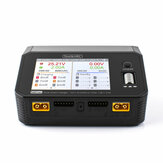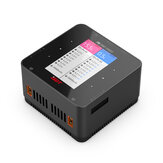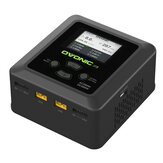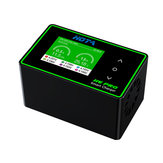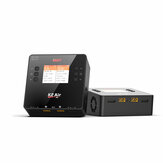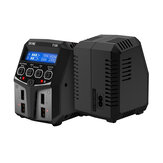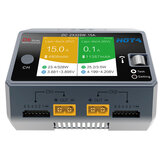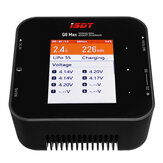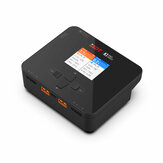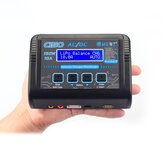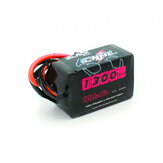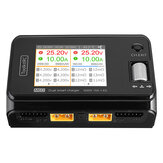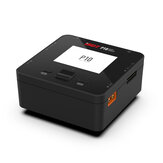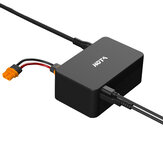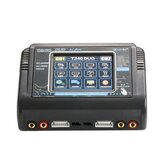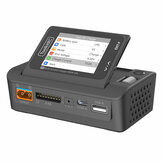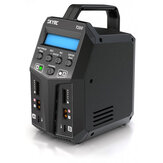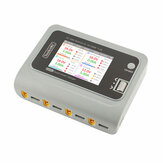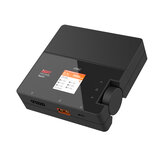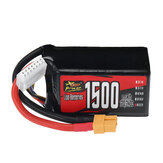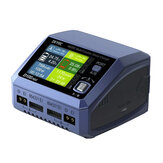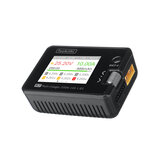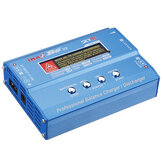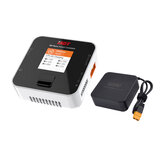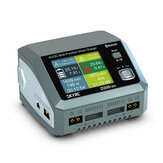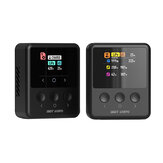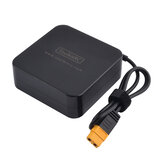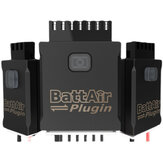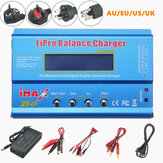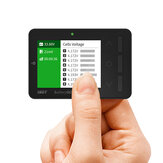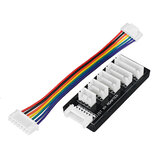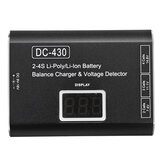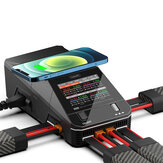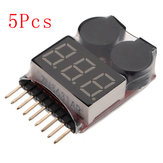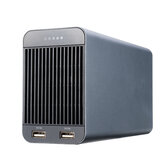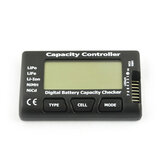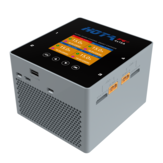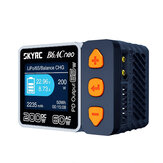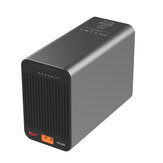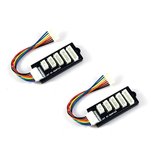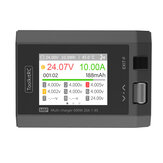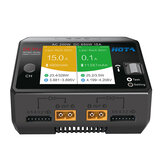Customer Reviews
- All Reviews (60)
- Image (9)
- Video (0)
A part of the review has been auto-translated.
-
 KostyaVIP3UA21/11/2021
KostyaVIP3UA21/11/2021ToolkitRC M6DAC This is my first charger from ToollkitRC, I don't know what the previous ones were good or bad, but this charger impressed. Compared to the Q200 (also with the internal power supply), the new M6DAC is about 2-2.5 times more compact. And in terms of functionality in general far ahead. Plus just a huge screen with useful information, which can be viewed entirely without traveling through the menu, pressing the buttons. The menu is informative, clear and convenient, and the control of one video is above all praise, again in comparison with the charge which I have been using for a long time (SkyRC Q200). I don't think it makes sense to list what is described in the specifications, but what I would like to note is the ability to use the output as a power supply. It is not a full-fledged lab power supply, but it is enough, for example, to test something in the field or to connect a soldering iron (I have a TS100). It is also convenient to have the Recycle mode, you can put unused batteries into storage mode, charging the discharged one. The essence of the mode is that you can not just discharge the battery to the storage mode, but pour the charge from it to the discharged battery connected to the input (XT60 on the back panel). It is very good that there are two independent channels, you can simultaneously charge different batteries according to the chemical composition or charge parameters. And there is a synchronous charge mode, for "merging" two outputs into one by power. The presence of USB-C output designed for 65W with PD and QC, also not superfluous and very pleased that there is. But there is a feature, or not yet figured out or so and works: when connecting the battery to the input and charging from USB-C, charging does not track the voltage on the battery and apparently can suck it to zero, which is very bad for the battery, you have to connect the discharge alarm to the balancing connector of the battery, which as if not very convenient. I was pleasantly surprised, the soldering and components look high quality, in some places streaks from f
Comments (2)Show Original -
19/01/2022
The packaging is correct, massive cardboard box. It's surprisingly large compared to the M8, but let's add, it includes the power supply and dual. By looking at his readings, he was quite accurate. The fan can be quite loud, but the little brothers (single and/or operating from separate power) weren't quiet when the fan started - especially when it switches to higher gears. But you don't spend batteries in the bedroom anyway The delivery was only one star because it was "1 star" compared to that, it was not mailed for days, and it finally got here in two weeks - and I needed it.
CommentsShow Original -
 PascalSJVIP5FR03/12/2021
PascalSJVIP5FR03/12/2021Nice charging. Came quickly, without any defects. The controls are intuitive. Convenient and high-quality.
CommentsShow Original -
18/05/2022
Tracking Information from Banggood displayed the delivery to the point specified during the order, however, the Ukrainian carrier did not send any notification. But despite the war in Ukraine, it was delivered in 38 days. The box is practically intact, one corner is slightly crushed. The charger is intact and working. I have not charged anything yet, I have only set it up to charge Lithium-Ion batteries. I am satisfied with the purchase.
CommentsShow Original -
 AnthVIP3FR21/03/2022
AnthVIP3FR21/03/2022I've been using it for 5 months now, getting my 3s lipos batteries, and it works well. No issues. I've been using it for 5 months, recharging my 3s lipo, and it works well. No worries to report.
CommentsShow Original -
15/01/2022
Fast delivery. Working very good.
CommentsShow Original -
 BariksonVIP5LV15/01/2022
BariksonVIP5LV15/01/2022Excellent device, but with a "surprise"! Works properly, but I decided to update the firmware, connect the computer, and the computer swears on a short circuit on USB. Disassembled, and there's a food stick! Be careful!
CommentsShow Original -
20/07/2021
very nice charger, easy to use, the screen is amazing, You can charge/discharge two batteries at the same time, i really like it.
Comments (1)Show Original -
05/07/2021
arrived in timely manner is in use as I type this review
CommentsShow Original -
28/03/2022
waiting on an answer on a broken item I received since Friday. just want a new one shipped unbroken, not shure what the hold up is so I can not leave a review yet. it arrived with cracked display
Comments (2)Show Original
